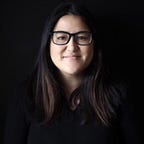How do you redesign your education coverage? Start by doing your homework
When California Governor Gavin Newsom took office in January 2019, he declared early childhood education his priority. The news came as no surprise to KPCC; we first assigned a reporter to cover early education in 2012. And we were a little lonely in the beat.
That’s because education coverage usually focuses on K-12, despite the fact that 85 percent of brain development occurs in the first three years. What happens to children ages 0–5 affects outcomes later in life, like incarceration rates and career opportunities. In those first six years, we produced more than 800 early childhood stories and convened more than a dozen in-person conversations to bring together experts and stakeholders.
Despite our success, we recognized a larger opportunity: What would happen if we were more intentional in how we defined our audience? What if instead of describing the audience as “anyone who listened or read KPCC stories,” we redefined it as parents and caregivers of children ages 0–5 in L.A. County? Would it change the stories we told? The way we told them?
Before we could answer any of these questions, we had to do our homework. We turned to design thinking to better understand parents’ and caregivers’ information needs and habits.
Design thinking is a methodology for solving complex problems that forces you to identify actual problems before offering solutions. As Hearken CEO and cofounder Jennifer Brandel has written, “At its most basic, design thinking is an agile process for solving complex problems. It’s a way of understanding the needs of the people you’re building a solution for, and testing that solution with them before creating it.”
We launched a five-step process:
- Development of stakeholder map and target characteristics
- Stakeholder interviews
- Synthesis
- Brainstorming
- Development of potential prototypes
This approach involved interviewing stakeholders — people who spend a significant part of their day engrossed in early childhood development — with significantly different target characteristics identified through early childhood reporter Priska Neely’s reporting (high income, low income, English dominant, non-English-speaking, etc.).
Traditionally, when journalists are on deadline, we ask subjects very direct questions that need a precise answer. With our approach, we employed more open-ended questions like “What do you worry about when it comes to your children?” and “If you had more time in the day, how would you use it?” as well as the observation of body language. This is to draw out implicit needs, in addition to explicit ones.
Explicit needs are what we can see: our conscious decisions and behaviors that we can observe and discuss. Implicit needs lie below the surface, and include emotions, values, and beliefs. Implicit needs are harder to observe, but they often provide deeper insight and focus.
We then worked with a design thinking specialist to identify patterns and themes in the interviews and observations. This synthesis allowed us to identify archetypes within our target audience as well as key insights that will drive our next phase of early childhood reporting and engagement.
The Archetypes
- Conspicuous Consumer: Likely part of KPCC’s existing reach, the Conspicuous Consumer needs information to feed curiosity, improve quality of life, and reinforce world views.
- Conscientious Caregiver: Less likely to be a regular KPCC listener, the Conscientious Caregiver needs information to inform their mission-driven work in the early childhood sector or to navigate the services designed for parents and caregivers.
- Busy Bootstrapper: Completely outside of KPCC’s existing reach, the Busy Bootstrapper needs information to survive and connect to resources.
- Passive Follower: Unlikely to be a regular KPCC listener, the Passive Follower has experienced financial insecurity but not so much as to search out information in the way the Busy Bootstrapper does.
Key Insights
- Formal and informal networks play an important role in collecting and disseminating information.
- Many parents are worried about their kids’ long-term futures instead of 0–5.
- Some face an additional learning curve and burden to navigate early childhood education and development system to qualify for or take advantage of resources.
We then brainstormed potential news services that could reach a new audience and enhance the strength of our journalism. Coming out of the synthesis process, we hired our first-ever early childhood engagement producer and selected three ideas to prototype:
- Printed fliers in libraries and parks
- Early childhood ambassador program
- Children’s book clubs at public libraries
What we’ve identified is a high-touch, low-tech approach with community engagement at its core. Over the next two years, we’ll conduct a series of experiments with these prototypes, measuring important qualitative and quantitative data and sharing learnings as we go, starting with this post and report.
It is our hope that our successes (and, possibly, failures) will accelerate the field of learning so that public media can play a more active role in engaging new audiences. The homework continues.
Coming next week: an early win.
Read the full report here and let us know what you think: aalvarado@scpr.org.
